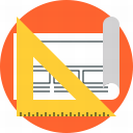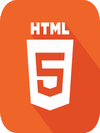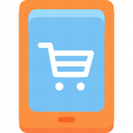What is Google Fonts, and why should I use it?
- Posted by Livecity In category Web Design
If you're new to the world of web design, you might not be familiar with one of the Internet's most useful freebies of all. Google Fonts [http://www.google.com/fonts] is a free service that offers hundreds of original typography creations, all free of charge and available to download or link to. If you want your website or blog to have a distinct, professional look, you can now skip the default fonts that scream "template" and choose your own family of Google web fonts instead.
A free and easy tool for amateurs
Google has long been the reigning king of free software and content. From Google Maps and Gmail to the almighty search engine itself, Google makes the Internet (and life itself) easier to navigate. So it's no surprise that Google cornered the market on free fonts too, offering this open source platform for completely free, original fonts. Google's many web fonts were created by real people and divided into helpful categories. You can count on them to be compatible with your readers' devices and browsers, and they're easy for newcomers too.
Livecity software, like so many other site-building platforms, supports the web fonts archived on Google Fonts. That means you don't have to download, unzip, or upload any files in order to implement these fonts across your entire website. All the font families are open source files that are shared freely, so all you have to do to customize your own website is enter the code that Google generates for you.
Find a font that fits
One font doesn't fit all businesses. Some websites call for more casual, informal fonts and others require professional or traditional fonts, but no matter what the style, it has to be user-friendly. That means every word should be easy to read, and there shouldn't be too many different fonts. You can customize every corner of your website by replacing default fonts with a Google font of your choosing.
You can preview all of Google's web fonts before committing to a few of them. The directory includes a box for preview text, so you can type your company name or website title, choose a size, and scroll through examples of the customized text. If you're used to Microsoft Word's list of font names, this will be a refreshingly easy way to visualize the final product and see if any individual letters will be a problem.
Limitless typography choices
Google classifies its web fonts according to category and type of script, and you can also filter your search results by thickness, slant, and width of the letters within each font. Categories include fonts that resemble handwriting and those that were made for display purposes, as well as the ever-dueling serif and sans serif fonts. This is actually an important distinction for web design purposes, so make sure you know the difference before making a choice.
Serif is a typography term for the "feet" or strokes that are on the ends of some letters. Examples of serif fonts include Times New Roman and Courier, and in print publications they help guide the eye across the page. Sans serif fonts are more casual, and they're also ideal for most screen resolutions because it can be small or big without losing important details.
The less your website looks like a pre-generated template, the more professional it will seem, but it's important not to overboard with the personal touches. As a rule of thumb, most web designers try to limit their arsenal to three distinct fonts, in order to keep it simple and consistent. That means all the text on your website should belong to one of these three font families. Don't forget to make sure that applies to extras, like widgets; it will be distracting if the only text in Times New Roman is the headline scrolling across your RSS feed reader. After you incorporate your custom Google Fonts codes throughout your entire website, it will start to take shape as your own unique corner of the web.
What is a content management system?
- Posted by Livecity In category Website Builder
A content management system (CMS) is a type of software that can create, publish, manage, store, and display content. While a wide range of industries use CMSs for a variety of purposes, their most popular use today is for building and managing websites and their content. In most cases, this is done through a simple graphical interface that allows users to build custom and up-to-date websites without having to know complicated programming languages and procedures.
Information overload: a need for content management
As computers and the internet gradually became larger parts of everyday business and personal life in the late 1990s, information itself became a commodity. For the first time in human history, people from across the globe were now able to create, store, and share valuable – or, in some cases, not-so-valuable – information through a common medium. Through this came the advent of web content, whose creation, publishing, and management became an entirely separate industry.
With such a large amount of information to deal with, people needed ways to manage it all. Through this necessity, the first content management systems were created to conveniently store and index a wide array of business information. As the internet continued to grow, CMSs gradually became an integral part of the web.
Content management systems today
Today, there are a number of different types of content management systems, each of which serves a slightly different purpose. However, it's important to keep in mind that all CMSs essentially provide the same basic functions: creating, publishing, managing, storing, and displaying content. It's how the system applies these functions, however, that makes them different. Below are a few of the most popular types of CMSs used today:
Information management CMS: Business enterprises both large and small have a lot of content to deal with. As a result, they rely on CMSs to manage, store, and search for information when they need to. While this may sound like a very basic function, it meets a very important need. If today's largest companies didn't use a CMS it would likely take an army's worth of people (and filing cabinets) just to keep track of all their information!
E-commerce CMS: The ability to create, manage, and display information on the web has made CMSs especially useful for e-commerce applications. In the past, long distance ordering often took the form of looking through a catalog and sending item numbers to a business through phone or mail. CMS systems completely automated this function by simply storing product information in a database that could be displayed through an online storefront. Today, e-commerce is a thriving industry that has provided major competition for physical storefronts and catalogs.
Website building CMS: In their most basic form, websites are a visual display of information and content. The coding languages used to make a website, however, can be complicated and inconvenient to learn for a vast majority of people. To help make website building easier than ever, companies such as Livecity have utilized CMSs to help users build modern and code-compliant websites through simple and easy-to-use interfaces. Today, website building CMSs account for over 100 million of the internet's websites!
5 Logo Makers That Will Make Your Life Easier
- Posted by Livecity In category Web Design
A great logo is essential for any business to have effective branding. A visual representation of your company is something that will stick in a customer's mind far better than just your name or website address. It also gives you a set image that you can include in all of your materials across digital and traditional media, giving a sense of unity to all you produce.
Creating a great logo can be a challenge, particularly if you don't have a background in art. Before you dig out a sketchpad and waste hours or days trying to come up with a perfect logo on your own, consider whether you should outsource this part of your branding. If you don't want to work with a professional designer, you can use an online logo maker program. Here we take a look at five of the best.
1. GraphicSprings
This online service offers a reasonably priced logo design that is suited to your industry. You can select from their templates, which are updated regularly to ensure you get a fresh, contemporary style. You can customize the color, font, and other elements to get a truly unique logo for your business. The logo maker is free, so you can be sure you have a logo you're happy with before paying.
2. DesignMantic
The main selling point of this online logo maker is that with an HTML5 tool, you can work on your logo on any device. This is a great choice if you want to tweak your logo while on the go, as it is compatible with mobile browsers. They also offer a large library of graphics and fonts, allowing you to get a custom logo for a low price. Like other logo makers, you only pay when you want to download your logo image.
3. Fiverr
If you don't want an off the shelf customized solution, Fiverr offers the opportunity to work with professional designers for a very low price. You can select a logo designer's services, pay their fee, and get a great logo back for your company. Prices do vary, but you can get exactly what you need and want for your business with the benefit of an expert eye.
4. DesignCrowd
The internet is full of great designers, and DesignCrowd helps you find the one that is just right for your logo design. By crowdsourcing your logo, you can get plenty of logos to choose from. For this service, you set up a design contest with a fixed fee going to the designer whose logo you choose. The better you are at writing a brief, the better results you'll get from this service.
5. LogotypeMaker
For simplicity, LogotypeMaker offers an easy to use interface that is ideal if you struggle with knowing what you want. Simply type in your company name and you'll get a dozen logos. Some can be further customized and some are free to use. If you don't like the options presented, all you need to do is click a button to see a different 12 designs. When you find one you like, select it or bookmark it to come back to. After setting up an account, you'll be able to download your design for use on your website.
What is a WYSIWYG web builder?
- Posted by Livecity In category Website Builder
When most people design a website for the first time, they rely on a WYSIWYG web builder to put it together. If you don't know how to code or design online content yourself, this free platform makes it possible to create and edit web pages without seeing their source codes at all.
WYSIWYG is an acronym that stands for "what you see is what you get", which is true for the content you create on website builders like ours. Livecity software belongs firmly in the WYSIWYG category, because you can use it to build your own website without any coding knowledge. Instead of making tweaks blindly, you can rely on live previews to guide you through each and every change you make. But WYSIWYG web builders are more than just page editing software.
Work with a page builder
Fundamental web design consists of two very different worlds: the source code that contains all the vital information, and the way it appears when you display the website in a browser. The standard free WYSIWYG web builder bridges these two worlds, allowing you to change the source code by manipulating elements on the page itself. Sometimes you can literally drag and drop the content, rearranging it and adding new objects, but most templates require you to work within less flexible boundaries.
Start with a template
Starting from scratch can be daunting and downright impossible if you don't know the basics of web design. That's why, for most novice web designers, a WYSIWYG web builder is only as good as the templates it offers. Templates are pre-coded designs that provide the skeleton of your website's layout. Some are more customizable than others, but the less confident or knowledgeable you are about web design, the fewer liberties you should take with your template options. Most already feature color palettes and fonts that complement each other, and spaces to insert your images and text into the design.
Learn about web design
Initially, using a WYSIWYG web builder doesn't require any special coding or computer knowledge. It makes web design more accessible, because as you select options from menus, the software generates new codes and refreshes the website as you go. But if you pay attention throughout the process, you can actually use the opportunity to learn more about web design. You can usually view the codes; in fact, some web builders even require you to manually add things like Google Fonts and custom widgets. Simple HTML involves tweaks like font colors and hyperlinks, so try playing with the code by making these obvious changes.
Visualize the final product
No matter how sleek and user-friendly your website is, it might not always translate to every user the same way. By using a web builder that offers a live display mode, you have a better chance of avoiding any common compatibility mistakes. Use your web builder to preview your content with different screen sizes, devices, browser types, and color settings. Most web builders, including Livecity, even incorporate automatic mobile website optimization taking your website and rearranging it into a phone-friendly layout.
How to Make a Free Website
- Posted by Livecity In category Website Builder
Whatever your business, you need to be online. Consumers expect that they will be able to find out about you on the web, and are likely to head to your competitors if they can't find you. If you don't have a budget for a web designer, though, you aren't automatically out of the running. It's possible to make a great website for free.
The first step to making a free website is finding a hosting platform that offers everything you need. Look for a service that offers multiple templates, ecommerce, and the latest technology, such as HTML5. LiveCity can help you create a great looking site that includes everything you want and need for your business.
Secondly, start creating the content. You'll be surprised how easy it is. In most cases, the content will be things you have already produced. A contact page is an essential element of any website. The best sites include both traditional contact methods -- such as your business' name, address, phone number, and email address -- as well as an easy contact form that visitors can fill out and submit directly from your site.
Other pages to include should be an introduction or "about us" page, which explains who you are and what you offer. If you are selling a product, having an ecommerce page can allow your customers to buy from you right on the spot. A great landing page will welcome visitors to your site and help direct them to the more detailed pages that make up the rest of your website.
Of course, even a free website needs to look great. With a drag and drop editor, LiveCity's free web builder allows you to easily design your website. This means you can get your website up and running quickly, too. Unlike a website you pay a designer to build for you, you don't need to wait to get your free website online.
Every business can benefit from having a website, and many individuals can also benefit from having a personal website. You don't need to pay the earth for it, though, and you don't need to be a technology whiz, either. Getting online can be done quickly and easily, and without cost, by using a free website builder such as LiveCity. Using this, you can have a professional, attractive site that can get you noticed for all the right reasons.
How to promote your website
- Posted by Livecity In category PPC & Marketing
If you are thinking about promoting your website, you have probably gone through the hardest part of the website ownership process which is setting it up in the first place – congratulations! Now you turn to promoting your website, the process that – despite being long and sometimes repetitive – is the one that will make a difference in terms of how your website is received and how it is perceived by potential clients or customers. Livecity are leading website building experts and offer the following advice for website promotion:
1. Identify why people should visit your website
This may sound like a simple question, but once you think about it the more you realize it is more complicated. You may say that you want people to visit your website so that they can buy your products, but what is stopping them from visiting any other website and doing the same thing? You need to identify what is special about your website and the products and services offered on it. If you cannot do this, you will find it very difficult to convince potential clients or customers that your site is worth their time (and money!)
2. Develop a promotion plan and stick to it
Many people make the mistake of thinking that website promotion is all about getting the website address in as many places as possible so that as many eyes as possible see it. These people are mistaken because promotion has to be targeted and it has to be delivered in a way that is consistent with the image that you want to portray of your business. Developing a promotion plan – and importantly sticking to it – can go a long way towards making sure that you are representing your company well. Think about avenues for promotion (are you doing just traditional promotion or using new avenues like social media as well?) and how those different types of avenue might impact the type of promotional materials that you will use.
3. Take every opportunity to promote
When you have a new website, people expect you to talk about it. It is a big undertaking and something into which you have probably invested a lot of time and sometimes money. Use every opportunity to promote your new website whilst remembering to maintain that professional and non-coercive tone. People won’t mind hearing about your website and all it has to offer if you are sensible and respectful about the way that you promote it in the first place.
How can livecity help?
As a leading website building company, Livecity has gone through these considerations with their own business and so they can best advise you about how to work promotion ideas into every stage of your website creation process. To find out more about their expert services, visit www.livecity.com.
How do i create a website?
- Posted by Livecity In category Website Builder
It seems that everyone has websites these days whether they are promoting their own storytelling and creative writing or advertising their latest services and products. If you are thinking about getting online, you have probably started looking into building your own website and been bombarded with information. As a company that has taken over ten years to craft itself into a leading service provider, we know how that feels. That’s why we have taken the time to put together this short guide to help you create your first website.
1. Ideas and Planning Stage
The first thing you should do if you are creating a website is sit down and take the time to plan out your ideas properly. You will probably have a lot of ideas about the type of website that you want to create or the look and feel of the user experience. It is important to get these ideas clear at an early stage to save yourself time later and to ensure that you can communicate as well as possible with others involved in your project.
2. Design Stage
The design stage is probably the most fun as this is where you get to see your ideas and plans come alive, but it is also one of the toughest in terms of getting everything right. Designs are imperative for ensuring that functionality is not compromised later on in the process. Play around with different themes, backgrounds, headers, texts, images, interactive content like sound files and videos, and communications modules like forms and share buttons until you get your website looking and working exactly how you envisioned.
3. Launch Stage
Once you have your website up and running and you have gone through all of the necessary tests to make sure that each button works and each links directs to its intended content, you need to start thinking about launch. Launching a family website where everyone can share photos safely and privately may involve a launch that consists of everyone being sent usernames and passwords but websites with a wider reach will need something more to get used. Promote via the Internet by putting your new website in your email signature and sharing on social media as well as engaging in traditional advertising mechanisms like newsletters and handouts to gain maximum exposure.
How can livecity help?
Livecity is a website building platform that lets anyone easily and affordably create a website and share it with the world. The expert team can guide you through the process or simply be there in case you need them. To find out more about what livecity offers, visit www.livecity.com.
What is “Google Adsense” and how I use it?
- Posted by Livecity In category PPC & Marketing
Once Livecity.com is successful in building a professional website, how do you earn money with the online content you’ve created? You can get more out of your content by utilizing Google Ads free advertising tool, AdSense. Whether your website content displays a favorite hobby, or if you plan to run a successful online business, AdSense will can help you earn money on each web page. Two million publishers around the world utilize the advertising tool to their advantage. You could be one of them.
How AdSense Works
AdSense opens doors to online advertisers. Google does the work of finding advertisers that have products that will match the content on your site. Text and images are matched to corresponding ads, and also to your site’s particular audience. Ads can be related to the interests of the visitors that are drawn to your website via search engine optimization . A targeted audience translates to a better experience for visitors and more ad revenue for you. The site owner chooses where the ads should appear, and advertisers bid to display in the ad spaces you have chosen. The winner, or highest paying advertisement will be added to your website, in that chosen location.
The ads that are placed on your site are gone over with a fine-tooth comb, by machines, but are also reviewed by real people. This ensures that high quality ads are placed on the website and are decidedly the best ones that coincide with the content and site visitors. Site owners do have some control, however. Webmasters may block the ads which they feel do not best represent their brand. How the ad is shown is also under the control of the site owner. A varying display of formats are available from which the site owner may choose. You may reject any format that doesn’t feel right for your site. Additionally, ads can be customized especially for your individual site, allowing the look and feel of the ad to better match your webpages.
The AdSense interface is optimized for mobile devices, which means you will have nearly instant access to your account. You can check to find how well your website is doing, in the way of earnings, and also receive important alerts that are crucial to the financial success of the website. There is no need for Flash on your phone.
The main purpose of AdSense is to increase traffic to your site, and once visitors are there, to entice them with relevant ads. To do this, AdSense utilizes web – based games, videos etc. AdSense handles the financials, billing the advertisers that appear on your site, to ensure you are paid.
What it takes to get started
The first step to take to get started with AdSense is to open a Google account. Secondly, you must have a quality website, like Livecity.com builds. The content you place on the site must comply with Google AdSense policies. Finally, a mailing address associated with a bank account is necessary to receive payments.
What are keywords?
Keywords are the words and phrases that people commonly type into Google and other search engines when looking for content. According to Michigan Tech, when designing a website, you should identify a specific keyword phrase for each page (http://www.livecity.com/site/live/features/seo.asp). Ask yourself what would a person be searching for before landing on your web page. Keywords can be commonly searched terms that are not necessarily related. Keywords used in keyword phrases often contradict themselves, however; grouping them together is beneficial in that it drives traffic to your site.
Keywords should be applied to the following areas of your site:
Meta data - Web pages have 3 meta data fields, meta title, meta description and meta keywords. The title is displayed at the top of your browser when viewing a web page and also the top line of search results on Google. The Meta description is displayed below the heading in Google search results and is your chance to include keywords as well as a compelling call to action to entice people to click on your result. The meta keyword field is a list of the keywords you are targeting on a page - Google no longer takes this into consideration when ranking pages, so this should be used for your own reference, if at all.
Meta data is generally embedded through the content management system. Livecity's content management system helps create metadata automatically for your website.
Headings and content - Your targeted keyword(s) should be included in what are known as header tags and in the body of the copy on your pages. A visitor to your site should be able to quickly scan the page and use headings to find the information that is relevant to them.
Links - In your top navigation, page content and in the footer, link to pages with descriptive keywords that will allow people to quickly and easily find what they are looking for.
Search Engine Optimization Tools
Many Web hosting services include SEO tools and analytics to help you better understand what drives traffic to your site. Google Analytics is an advanced SEO tool that includes specific features to help you enhance your keywords usage throughout your website. Livecity's content management system also includes SEO tools to help you add keywords and descriptions to all of the media and pages embedded in your site.
What is HTML5 and why it’s better your website have it
- Posted by Livecity In category Website Builder
The friendly team here at Livecity, at work and outside, are often asked by customers or friends to explain some of the terms they use without thinking about them. This regularly reminds us that not everyone speaks the same language that we do! One question that has been regularly asked over the last couple of years is: “What exactly is HTML5?”. The obvious answer, but not necessarily completely helpful, would be that it’s an upgrade to HTML4!
All about HTML (and version 5)
Therefore, let’s start with a quick look at HTML itself (feel free to skip this bit if you already know). HyperText Markup Language is the language used to create web pages and is written in the form of tags enclosed in angle brackets such as
. A web browser then has the capability to read and interpret these tags and use the information to create visible or audible web pages. HTML5 is, as you’ve guessed, the fifth revision of the first creation in 1990, and was the first major change for fifteen years since HTML4 was standardized in 1997.
In 2012, it was recommended by W3C – the World Wide Web Consortium, the main standards organization for the web. Professional designers and programmers have already favorably commented on its cleaner markup and improved code, enhanced semantics and accessibility, and even its elegance (a high compliment from such demanding folk).
The benefits of the Livecity HTML5 Website Builder
As we've already seen, every business has its private language – those words and phrases that people working in that industry or marketplace fully understand and often use without thinking, sometimes to the confusion of “outsiders” – often customers. Through our use of HTML5 you can quickly create your own professional and user-friendly website, without needing to know or use any programming language or skills. As the latest upgrade, now accepted as the industry standard and recommended for use, it contains powerful advancements on the previous versions. It is supported by all key web browsers and can quickly be both read and deciphered by major search engines. Incidentally, this makes it quite different from Flash, which is unreadable by these same search engines.
What free HTML5 brings to your Livecity created website
Using the latest technology means that its innovative features are available to be incorporated into your website. Would you like a video or sound clip to be part of your webpages? No problem! Keen to use some 2D animations? Same answer!
Another terrific piece of news is that, through using version five, your site’s layout is automatically adjusted for all the different devices that support it. Our free Livecity HTML5 website builder can help you get started as soon as you wish.
What this all means for you
No matter your level of expertise in the field of either programming or design, the real key is to be able to quickly create a stunning and professional website that best presents your business message to those interested in finding and benefiting from it. Like any other indispensable tool, that’s really how HTML5 truly best helps you.
How to create an online store
- Posted by Livecity In category E-commerce
You have decided to set up an online store, either as a business on its own or as part of your other activities. To achieve this, there are several steps you need to take. Luckily, actually building your website is covered by our Livecity e-commerce system, which allows you to quickly use terrific templates and simple processes to create and manage a stunning online store, including accepting payment by both card and PayPal. Here is a five-step guide to allow you to make the most of this resource:
Step 1: Undertake careful planning
There can be an understandable enthusiasm to get started in creating stunning designs and effective web content. Before you start though, you do need to carefully plan to make sure your online store is as productive for you as possible. To achieve this, it’s really important to take on the role of your potential customers. When they arrive, the impression and content needs to present the picture that they would want to see. Your style needs to be designed to help them quickly understand what they wish to know, and allow them to take buying action in as simple a way as possible.
Step 2: Create relevant and understandable content
When constantly working in your business, it’s very easy to forget that many of your customers simply don’t share your level of knowledge or understand the jargon of your business. To help customers undertake the action you want them to, your content should be pitched at their level of understanding, without ever talking down to them.
Step 3: Deliver effective arrival points
Those who visit your store will arrive from a range of different places. It may be through Google or another search engine, by using a link from social media sites such as Twitter or Facebook, as a result of a recommendation by a friend, through your own email marketing activities, or elsewhere. Some may reach your homepage, but more often they will probably be searching for a specific item. You should therefore create each individual landing page to let them know they have reached the right place, then provide the specific information they seek, and move them quickly on through the process.
Step 4: Provide selling descriptions
Arriving at their destination, your customers are not looking for just a cold and impersonal technical description of the product. Make sure that the language you use reflects that item and who is likely to buy it. This might range from fairly formal business-related products to much more chatty home or leisure stuff. Provide your visitor with confirmation that this product will do what they want it to, so talk about the benefits they can enjoy or the results to be gained. To this add the relevant product information that proves your case. Always remember that your copy is there to sell that item rather than simply describe it! Finish by moving them on to the next buying stage.
Step 5: Complete the buying process
Deliver as simple and hassle-free a buying experience as you can. Unless you have to, don’t insist that every buyer must “sign in” or “join up” – certainly give them this option, but an insistence will lose sales. Your Livecity e-commerce system templates will greatly help throughout this process.
On completion of their order, your work is not done. Ensure that your customers receives a friendly thank you and full details of how and when their purchase will be delivered.
Final thought
Once you are up-and-running, do remember that physical stores change their product lines and make fresh offers on a regular basis. Do this for your online store, keeping it lively and interesting.
What is "Authorize.Net" and how do I use it?
- Posted by Livecity In category E-commerce
If you're considering adding ecommerce to your website, you've probably come across Authorize.Net. If you're wondering what it is, and how you should use it on your business' site, we can help. In this article, we'll take you through what it does, and why you should use it on your website.
What Is Authorize.Net and what does it do
To process card payments, whether it's online, in a store, or over the phone, a business needs a service to communicate between card issuers and banks. This service authorizes the customer's payment, ensuring that you get the money for the product you are selling. Authorize.Net is an online payment gateway, allowing you to authorize, settle, and manage credit card transactions.
A payment gateway offers you and your customers a secure way to transfer the information of an online transaction. This means your customers can securely enter their payment details and they can be transferred to your bank with the appropriate security in place. As a gateway, Authorize.Net allows your customers to purchase online knowing that they are doing so safely, and it allows you to accept payments online without having the technical knowledge required to connect your website to your card service.
Authorize.Net is a well recognized payment gateway, and a name that many consumers know they can trust. Having Authorize.Net as your payment gateway means you can include a Verified Merchant seal on your site, too, which can further instill confidence in your customers.
Why and how to use it
When it comes to your ecommerce site, Authorize.Net is a great choice because it is easy to use. Along with being trusted by businesses and consumers, it is easy to set up and maintain. This is very important if you want to increase the sales you do via your website.
The Merchant Interface part of Authorize.Net allows you to manage your transactions, generate reports, and adjust your settings. This makes it easy to integrate with your existing accounting methods, as well as any order processing you need to do. As it is hosted online, you don't need to worry about installing software on your computer. It also means you can access it anywhere.
While some businesses find that an external service like PayPal is sufficient for their business, many feel that it isn't enough. A gateway like Authorize.Net allows you to accept payments directly through your website, as well as through other offline methods. This can give your company a very professional appearance, which will also help attract more customers.
Whatever you are selling, or however you are collecting payments, Authorize.Net can be adapted to your needs. This is part of why it is such a favorite among retailers, particularly those who want a solution that can cover both online and offline transactions.
Authorize.Net has been building a reputation for outstanding service and an excellent product since 1996, making them a very trusted payment gateway service. Between the ease of use and the trustworthiness of Authorize.Net, it is no wonder it is considered the top payment gateway.
Why do I need a good logo for my business?
- Posted by Livecity In category Web Design
Whatever type of business you are in, you want your company to stand out from the crowd. Of course great service, an excellent product, and fantastic prices will be a big help, but one thing that can help you stick in a customer's memory is a great logo.
Creating a brand
One thing that sets very successful businesses apart from the rest is that they have developed themselves as a brand. Branding gives your business a reputation and recognition. It makes you unique among your competition and gets you remembered. A big part of any branding strategy is the visual aspect of it. This is where having a great logo comes into play.
Think about any brand and you probably bring their logo to mind. Whether it's your favorite soft drink, a football team, a television station, or a power company, the mental image of the company is almost certainly their logo. Logos are such a strong part of branding that they have even been made into board games!
Logos for SMEs
While the examples of brands above are bigger enterprises, that doesn't mean that logos should just be for multinationals. Small businesses can benefit greatly from a logo. As a SME, your company needs to compete as best it can. This means grabbing the attention of customers and making them come back to you time and time again, and recommend you to others.
Just like those big brands, having a logo for your company can make you more easily remembered. By giving customers a visual they can associate with your company, you reinforce their memory of your name. When asked if they know anyone in your field, you'll be much more likely to come to mind.
How to use a logo
Getting a great logo is important, and using it right can make a big difference, too. Your logo should reflect what your company is all about, and a logo designer can help make sure it works the way it should. Once you have that logo, though, you need to get it out there.
As a method of branding, your logo should be everywhere. It should appear on every page of your website, on letterhead, on business cards, and in any promotional material you have created. A new logo can even be a newsworthy event. Some big brands have managed to create huge viral advertising campaigns based around a change of a recognizable logo.
When it comes to your business' logo, you should make sure it gets the attention it deserves. An easily updated website, made with a drag and drop editor, can make it possible for you to add your logo as soon as you have it ready to go. The sooner you begin to use your logo, the more time you'll have for it to make an impact on new and existing customers.
Making your business a brand is a key part of marketing success, which in turn leads to long term success for your company. Having a great logo, and using it across digital and traditional media, can be a huge part of any branding campaign.
5 Tips for designing a great logo
- Posted by Livecity In category Web Design
A logo is a crucial part of any branding and marketing plan for your business. You need a logo that reflects your business and what you offer customers. Designing a great logo can be tricky, but it is worth all the effort you put into it. Here are five tips for designing the perfect logo for your business.
1. Choose the right color
The color or colors you choose for your logo are very important. Many brands have logos that can be recognized simply by their colors. Swap the colors and the logos are suddenly unrecognizable. This is because colors are easy to remember and associate with a brand. Think about anything from soft drinks to social media and you'll know the colors associated with each brand and their logo as much as the logo itself.
2. Know the audience
A great logo is suited to the target audience. If you're aiming a product at kids you'll want a different approach than if you're aiming it at senior citizens. The same is true if your customers are high end businesses or middle class consumers. The audience should be your target demographic, and the logo should be something that fits in with the tastes and preferences of that demographic. Don't be afraid to ask for opinions, either. Friends, family, and customers are all vital resources when it comes to finding the logo that is right for your brand.
3. Keep it simple
The biggest failing of many logos is that they are over-complicated. Whether you choose to use an image logo or a logotype, simplicity is key. You need something that can be easily recalled and that will look great across a variety of platforms. One way to think about it is to think about whether you'd be able to describe and quickly sketch out the logo for somebody who had never seen it before. If not, you might need to think about how you can simplify your logo design.
4. Know the brand
Knowing what the brand stands for is at the base of any great logo. The logo doesn't have to be a blatant image of what you produce, but it does need to convey something about the company as an entity. Are you sleek and modern or traditional and reliable? Are you offering a product that will make the world better or make a single consumer happier? A great logo should aim to encapsulate this type of idea in a visual way.
5. Make it adaptable
Many of the best logos can be adapted for different uses. In some cases this is a matter of having a big logo with a graphic and the company name, and a shortened version with just the graphic or just the name. In others, it is a single design element that can be carried across different platforms, such as advertising, the product itself, and media. In some cases, such as on your website, you can include multiple versions. This can offer a way to reinforce that they are all to be associated with your brand. With drag and drop editing on a website, this is easy to do.
5 ways to improve your Pinterest marketing
- Posted by Livecity In category PPC & Marketing
Not long ago, Pinterest was a new site that could be accessed by invitation only. Now it has grown to be a major social media site, allowing users to share visual links in a unique way. Like any social media site, it offers many opportunities for businesses to market what they have to offer. Whether you are new to Pinterest marketing or looking to improve what you're already doing, here are five tips to get more from the site.
1. Don't pin everything
One mistake made by a lot of businesses is to pin everything they have available. While it is tempting to put your entire stock up for the Pinterest audience, it is much more effective to limit what you pin. Choose one item to pin each day, or even every other day. Keeping new pins going up on a regular basis will help you get seen, while limiting the amount you pin at any one time will keep users from getting overwhelmed.
When you do pin images from your own website make sure they're watermarked. This can go a long way to boosting your traffic. If your image gets repinned, but the link doesn't work, or it somehow gets associated with a different link, you won't completely loose out on the potential traffic. On images of things you have for sale, be sure to mark this in the pin so other users can see right away that they can quickly buy it if they like the look of it.
2. Pin beyond your products
Pinterest isn't a catalog of what you sell, and your marketing needs to step beyond this. Pinterest offers you a way to demonstrate your brand's core values. Make sure you regularly pin things that you find interesting and inspiring. This can give other Pinterest users an idea of what your company is about, and reach a larger audience than product pins.
3. Use all the features
Pinterest regularly rolls out new features, so be sure to use them. The introduction of private boards gave an opportunity to give exclusive sneak peeks to customers, and the new conversations feature gives you the ability to engage customers in a more direct way.
4. Add 'Pin It' buttons to your site
While having a Pinterest profile is important, the biggest bang you'll get from Pinterest marketing is on your own website. Build your own website with Pinterest users in mind, and include the ability to pin directly from your site. This allows anyone who visits your site to do instant word of mouth advertising on your behalf.
5. Be organized
Pinterest allows you to create many different boards, and you should use this to your advantage. Don't create too many, though, as boards with only one or two pins will get ignored. However, split your pins in a logical way across clearly titled boards. There's still space for creativity, but make sure users will know what to expect. Having a great main display image will also help with this, so choose it carefully!














